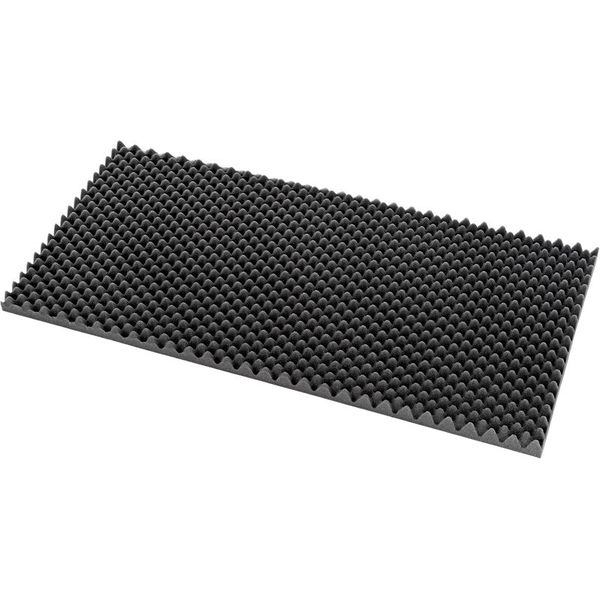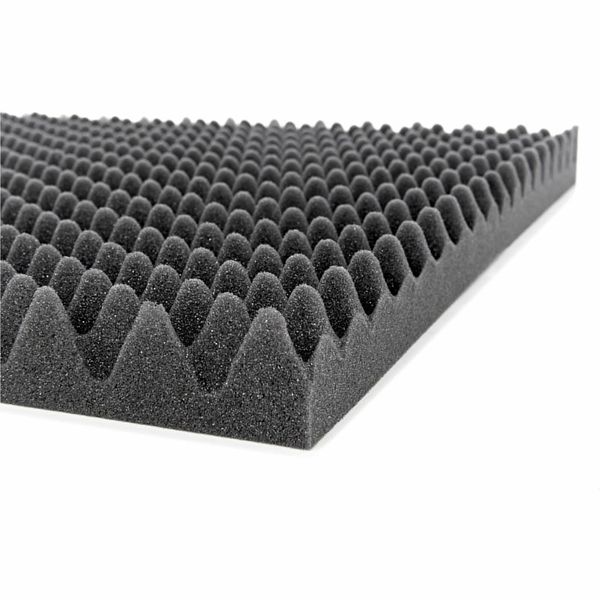Application: home studio (a single room 6x3 meters which needs to be acoustically almost dead)
For a while, I couldn?t decide whether to go for these panels or a larger 1x1 meter version. I'm glad I went for 1x0.5 meter model.
For one thing, they're cheaper per square meter.
Also, a smaller panel is easier to maneuver into position on the wall, is less prone to bend under it's own weight and, last by not least, gives you more freedom in planning where to put them onto your studio walls.
These panels are very light but, at the same time, they're also sturdy and do not bend - it makes application very easy.
As for the acoustic properties - there were terrible reflections in the room even with all the furniture and carpets in place. A normal conversation echoed all around, every sneeze was 'amplified'.
After I attached 8 panels (6 on one long wall, 2 on the wall opposite + 7 pieces of small EQ Acoustics Classic Wedge 30 tiles), most of the reflections were gone. Sure, I still need to do something about the ceiling and the wall behind the speakers.
These are cheap but great quality acoustic foam panels - they do the job, they reduce (eliminate?) reflections, they contain the sound in the room and improve the acoustic properties.
It's likely that a professional would find them inadequate for a professional studio. But most of us are just keen amateurs - for our studios, these panels will do the right job for a great price.
An interesting note: the panels may appear to be of different shades of gray when looked at from an angle. This is an optical illusion caused by the way the panels are cut and formed. Turn one panel upside-down and you'll see they're perfectly matching.
I suggest that you align the panels before you glue them to the wall to make sure they appear to have the same color.
I used Thomann's t.akustik Contact Glue to attach them to the wall.






